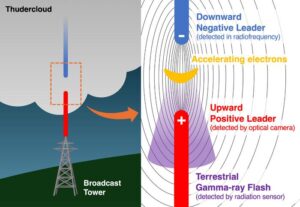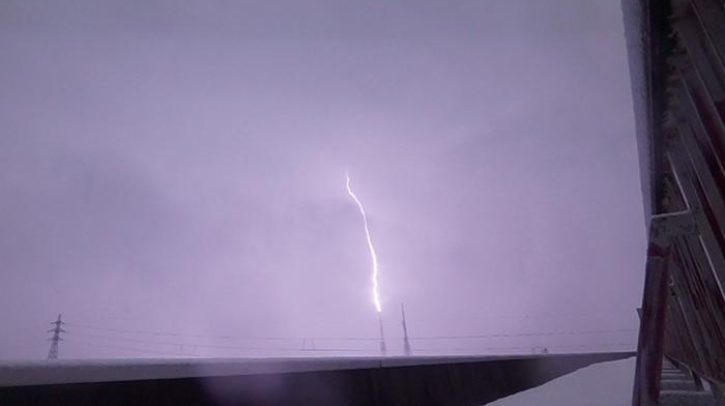A world-first multi-sensor detection of an intense gamma-ray flash has been observed by researchers from the University of Osaka, when two lightning leaders collided. Observations across a wide radiation spectrum enabled precise measurement of the electric current produced during this extreme event and demonstrated that the gamma-ray flash preceded the collision of the lightning leaders between the thundercloud and the ground.
The article Downward Terrestrial Gamma-ray Flash Associated with Collision of Lightning Leaders will be published in Science Advances. Led by researchers from the University of Osaka, it describes how the observation of the intense burst, known as a terrestrial gamma-ray flash (TGF), synchronized with a lightning discharge.
It had been hypothesized that TGFs arise from lightning discharges as a result of the acceleration of electrons to very high speeds. However, before the multi-sensor setup, the transient nature of this phenomenon made it difficult to confirm this hypothesis as it lasts for only tens of microseconds.
A multi-sensor setup
In this study, a multi-sensor setup was used to observe TGFs emerging from lightning storms in Kanazawa City, Ishikawa Prefecture, including optical, radiofrequency and high-energy radiation.
“The multi-sensor observations performed here are a world-first; although some mysteries remain, this technique has brought us closer to understanding the mechanism of these fascinating radiation bursts,” said Harufumi Tsuchiya, senior author.
The research offers not only a rare glimpse into the inner workings of lightning, but also valuable data that could be used to improve the safety and resilience of structures vulnerable to high-energy atmospheric phenomena.
“The ability to study extreme processes such as TGFs originating in lightning allows us to better understand the high-energy processes occurring in Earth’s atmosphere,” explained Yuuki Wada, lead author of the study and physicist at the university.

Discharge observation
Two discharge paths were observed, one descending from the thundercloud to the ground-based transmission tower and one ascending in the opposite direction. The researchers found that a TGF occurred just before the two discharge paths met, creating a highly concentrated electric field that accelerated electrons in the air to near light speed.
The first TGF photon was observed 31µs before the collision of the discharge paths, and the full burst lasted for 20µs after they met to form the lightning strike. A discharge of −56kA occurred as a result of the collision of lightning leaders.
According to the researchers, this observation contributes critical data to the longstanding mystery of how lightning generates enough energy to produce gamma rays – phenomena typically associated with outer space events like supernovae or black hole jets. The study also supports emerging theories about lightning leader dynamics and the potential role of thermal runaway or relativistic feedback in these extreme bursts.
In related news, researchers at the China National Energy Key Laboratory of Lightning Disaster Detection, Early Warning and Safety Protection and the Laboratory of Lightning Monitoring and Protection Technology of State Grid Corporation of China recently developed a deep learning-based nowcasting lightning model. Read the full story here



